This mornng was exiting. The bridge across the sound at Midsund had a clearance of 18 meters which is lower than our mast. This led to a rather deep search for how to interpretate. Norwegian pilot (Den Norske Los Bind 1) informed us that bridges and cables were measured from highest astronomical tide.
Next problem, how to find the tide and highest astronomical tide? The Norwegian Meteorologisk institutt has a WEB page “” (and an app but the app does not have this data) where one can find a forecast for “Sea and coast” for a lot of locations. At the bottom is a table for “Predicted tides”. Below the table is a link to more detailed information where you may find everything you need if you scroll down.
Having done this exercise, we concluded that we could safely pass under the bridge with our 19,5 m mast (including antenna) on the rising tide until eight a clock in the morning. Now, the second problem was the forecasted rain the same morning as we do not like to sail in the rain. We woke up around seven and there was no rain, so we prepared to leave the dock and almost managed to do so before the rain started.
With our cockpit tent up, we cautiously pasted the bridge successfully in heavy rain. The rain continued almost until lunchtime as we motor against choppy waves and rather strong wind dead on the nose. We turned southwards after Alesund (Ålesund) and had a nice reach towards the fjord for an hour or so.

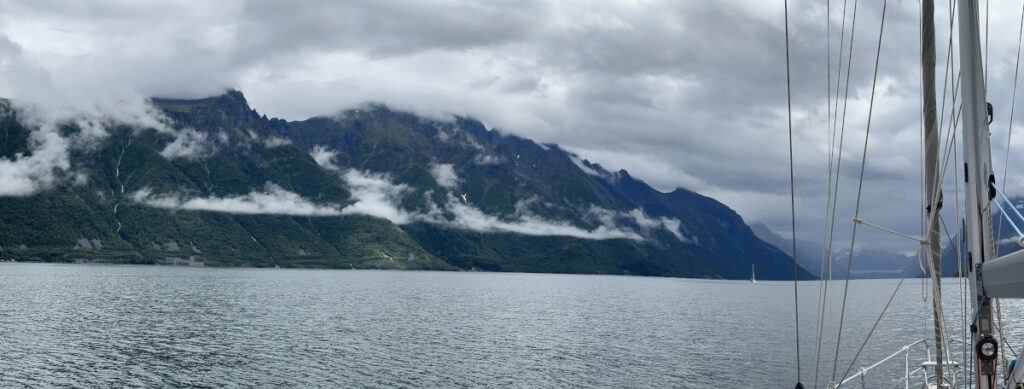
Now, one characteristic of Norwegian fjords is the high mountains that surround them. They turned our nice downwind sail to a flat calm rather suddenly and the motor was back in service again. We prefer sailing but, a small comfort whilst motoring is the nice heating we get for free as we have a water based central heating system with eight radiators heated by the engine cooling water.

We wanted to visit Hjorundfjorden (Hjörundfjorden). It is by many regarded as the most beautiful fjord in Norway even if it’s next door neighbour to NE, Geiranger, is more famous.
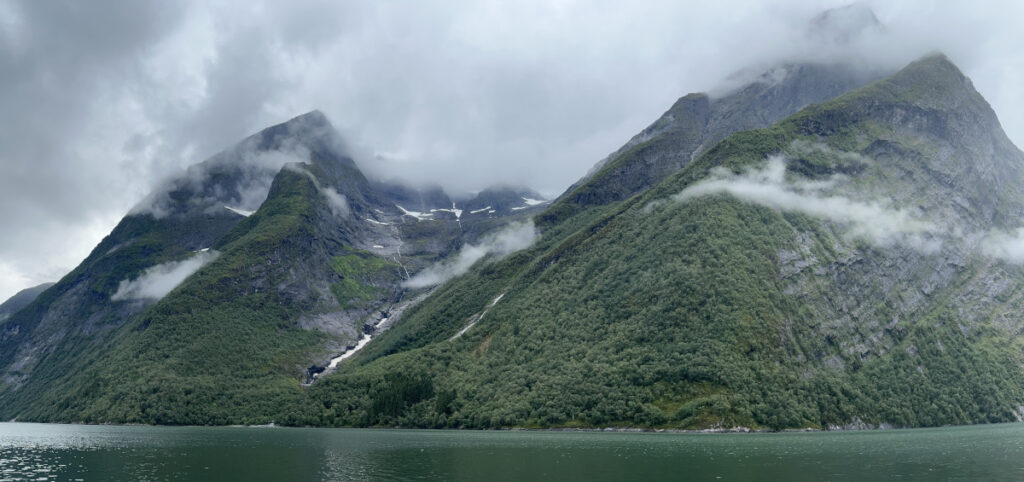
Hjorundfjorden is rather short and “compact” and this makes it interesting to navigate. The surrounding mountains are majestic, and we were lucky enough to have the clouds lift and even let some sun in as we went inside.
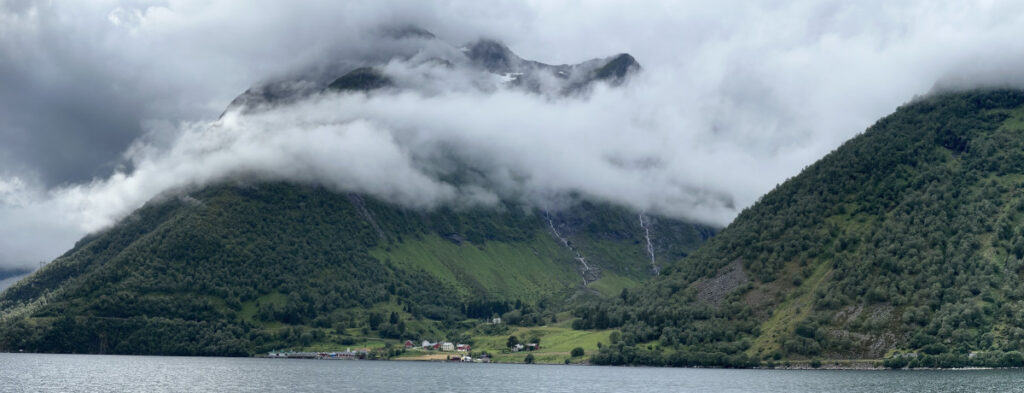
There are several villages and harbours along the fjord.
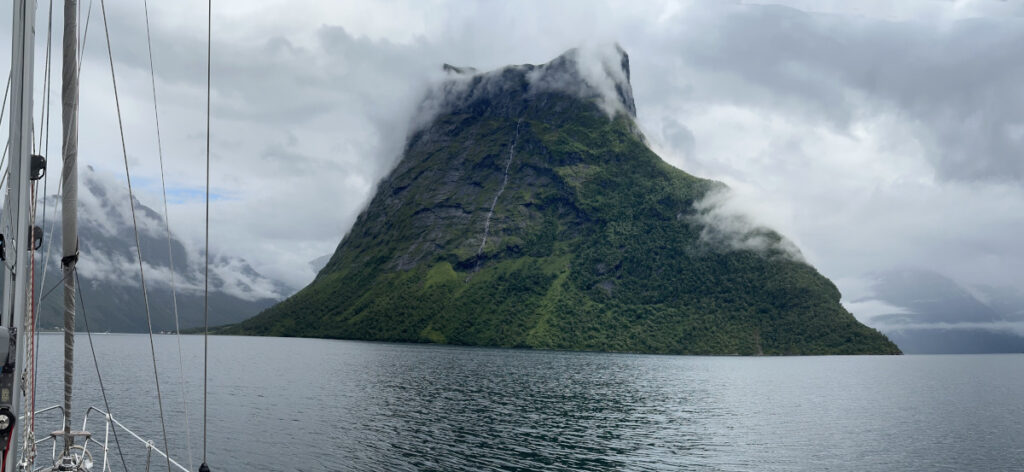
Oye (Øye) lies at the bottom of a branch to the east in a beautiful small valley. We moored to the ponton for the night.
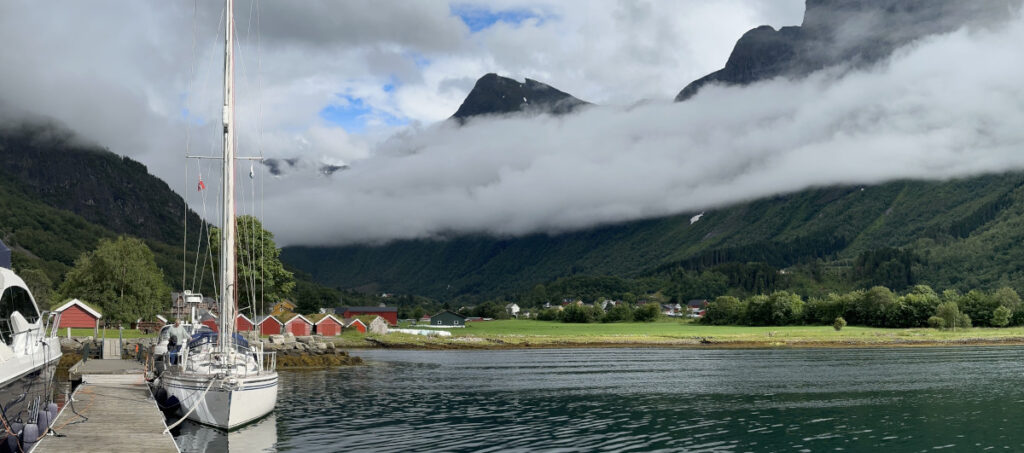
Oye is home to a very famous hotel, built in wood, from the turn of the last century. They operate the dock and friends that visited earlier in the season were offered a combo of docking fee and breakfast at a reasonable price. Now the hotel was full and could not accommodate us for breakfast.
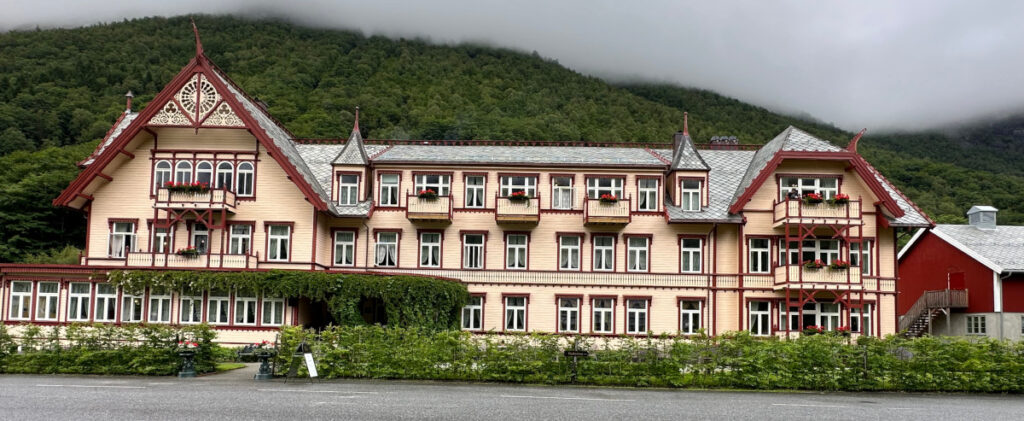
We had a nice evening stroll in the valley and along the fjord. Strawberries and raspberries were ripe and provided a small desert.
